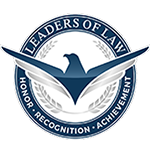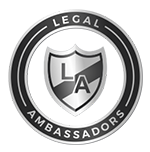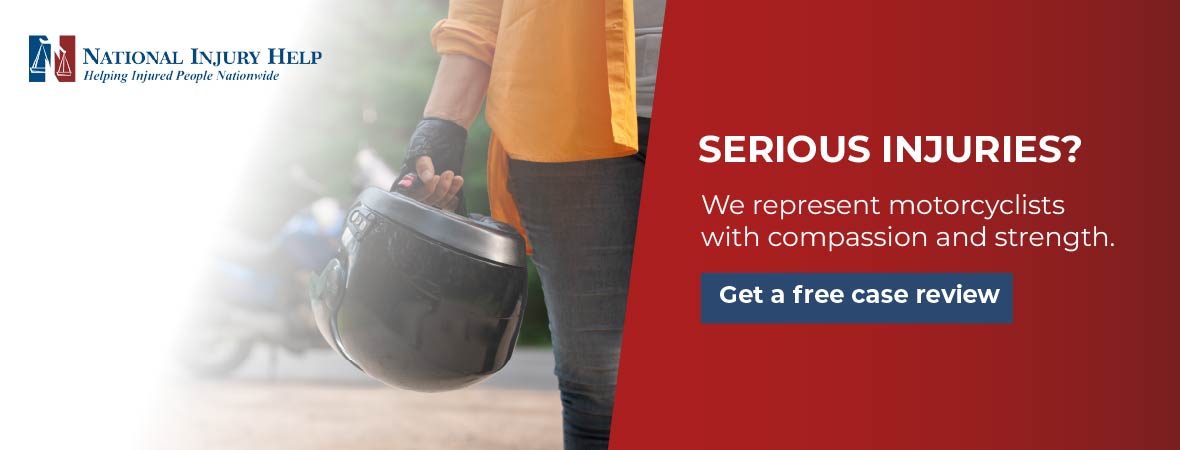Motorcycle crashes often lead to serious injuries, even at low speeds. If you or a loved one was hurt in a motorcycle accident, contact National Injury Help today. We are ready to protect your rights and fight for fair compensation.
Ask any motorcyclist what makes riding special, and they’ll mention freedom, speed, and the rush of the open road. But that same openness leaves riders exposed. With no airbags or metal frame, even a minor crash can lead to serious injuries and major medical bills. A more severe accident can change a life forever.
That’s why it’s important to understand the most common injuries riders face. Knowing what to expect can help you respond faster after a crash, ask the right questions at the hospital, and stand firm if an insurance company downplays your recovery needs.
Why Motorcycle Accidents Often Cause Severe Harm
There are several reasons why bike crashes are often severe. Let’s take a look at some of them.
1. Riders Have No Structural Shield
A modern car surrounds its occupants with crumple zones, side-impact beams, and curtains of airbags that inflate in the blink of an eye. A motorcycle offers none of those layers. In most crashes the rider is the crumple zone. Even at neighborhood speeds, that can mean a fractured wrist or collarbone. At highway speeds it can mean catastrophic brain or spinal cord injury in a fraction of a second.
2. Common Triggers Behind Motorcycle Crashes
- Driver Negligence: The classic left-turn situation takes the lead nationwide. An oncoming car or SUV turns across the bike’s lane, the driver claims they never saw the motorcycle, and impact follows. Lane changes without mirror checks, texting at stoplights, and misjudging a bike’s speed round out the list.
- Excessive Speed and Reckless Riding: A minority of riders push limits by weaving through traffic or popping wheelies. Even if the car driver is more at fault, higher speed magnifies every injury once contact happens.
- Weather and Road Conditions: Rain lifts oil residue to the surface and turns the asphalt slick. Loose gravel, leaves, or a pothole hidden in shade can send a bike sliding sideways in an instant.
- Visibility Problems and Blind Spots: Motorcycles fit neatly into the blind zone of pickups and crossover SUVs. Twilight and dawn are especially risky because a single headlamp can blend into the background glare.
3. Helmets and Protective Gear Help, but Only to a Point
A quality full-face helmet cuts the risk of a fatal head trauma nearly in half, yet it cannot eliminate the rotational forces that cause concussion and other brain trauma inside the skull.
Jackets with impact armor, reinforced gloves, and over-the-ankle boots do reduce road rash and crushed bones, but joints can still hyperextend, and blunt force can still travel up the limbs. Gear buys time and lowers severity, but it does not make a rider invincible.
Common Motorcycle Crash Injuries
Trauma doctors, first responders, and personal injury lawyers across the country spot certain injury patterns again and again when it comes to common biker injuries. Knowing those patterns helps riders recognize symptoms early, guides doctors toward the right scans or surgeries, and lets legal teams calculate true future costs.
Head and Brain Injuries
Even helmeted riders can suffer concussions because the brain can slam against the inside of the skull during sudden deceleration. Sometimes the rider walks away and only hours later develops a splitting headache, blurred vision, or odd mood swings that family members notice.
More serious traumatic brain injuries, known as TBIs, can leave lasting problems with memory, concentration, or emotional control. Brain rehab often stretches over months or years and may include occupational therapy, speech therapy, and neuropsychological testing.
Spinal Cord Damage and Paralysis
A rider who is thrown backward may land on the tailbone and shatter the lower vertebrae. A high-side flip can wrench the neck farther than nature intended.
When fractured bone fragments nick or sever the spinal cord, the result can be paraplegia, quadriplegia, or partial loss of sensation paired with chronic nerve pain. Lifetime medical costs can rise into the millions when you factor in wheelchairs, home modifications, and assistants for activities of daily living.
Broken Bones
The human instinct to brace for a fall means wrists, forearms, and collarbones break often. When the bike pins the leg or slams against a bumper, the femur or tibia may fracture. Surgeons might use plates, rods, or pins, turning bones into a scaffolding of metal while they heal.
A straightforward break can heal in six to eight weeks, but complications like non-union, malunion, or infection can stretch recovery into many months. Riders sometimes face a tough economic choice: push through pain to return to work early or risk job security while waiting for full strength.
Road Rash
Mild motorcycle accident cases remove only the top layer of skin. Severe cases strip through fat and expose muscle or bone.
Risks include infection from embedded grit, thick, raised scars that contract and limit movement, and nerve exposure that leaves lasting pain. Modern textile and leather gear with built-in armor slashes road rash cases dramatically, but hot summer days tempt riders to skip jackets, and a moment of comfort can lead to weeks of wound care.
Internal Injuries
Blunt force can bruise or tear organs even when the skin looks fine. A rider who feels “winded” may harbor a slow-bleeding spleen or a partially collapsed lung.
Warning signs like belly pain that worsens when moving, shortness of breath, or feeling faint on standing should send a rider back to the emergency room at once. CT scans and ultrasound can catch hidden bleeding if doctors know where to look, so it helps to tell the ER team exactly how and where the body slammed into the tank or pavement.
Facial Trauma
Half helmets and novelty lids leave jaws, noses, and cheekbones exposed. A slide can sand away layers of skin, while a face-first impact can shatter the delicate bones around the eyes. Reconstructive surgeons use tiny titanium plates and bone grafts, yet scars around the lips or eyelids often remain.
Serious dental damage may require implants or bridges that insurance carriers sometimes label cosmetic. Beyond appearance, double vision and difficulty chewing can interfere with work and everyday confidence.
Amputations and Crush Injuries
When a limb is pinned between a bike and asphalt or run over by another vehicle, blood vessels and nerves may be damaged beyond repair. Surgeons may have to remove the crushed part that same day or later if infection sets in.
Recovery involves multiple operations, fitting and refitting of prosthetics, physical therapy to relearn balance or grip, and counseling to deal with phantom pain and the emotional impact of sudden limb loss. Replacement prosthetics every few years add to long-term costs.
What To Do After a Motorcycle Accident
1. Call for Medical Help Right Away
Dial 911 even if you think you can shake it off. Adrenaline masks pain. A slow brain bleed or internal organ damage can take hours to appear. Prompt assessment improves the odds of a full recovery and creates a clear link between the crash and later medical bills.
2. Document Everything You Can
If it is safe, take pictures of the bike, skid marks, weather conditions, and your own visible injuries. Ask a friend or bystander to help if you are unable. Collect names and phone numbers of witnesses since their neutral observations carry weight. Keep every medical record, prescription receipt, and therapy note in one folder or phone app. A well-organized paper trail strengthens both medical care and any insurance or legal claim.
3. Contact a Lawyer Experienced in Motorcycle Cases
Motorcyclists often face bias that assumes riders are thrill seekers who accept extra risk. Insurance adjusters know that bias and sometimes lean on it. A lawyer who knows motorcycle culture and traffic law can counter stereotypes with hard evidence and expert testimony. Legal counsel can also negotiate with hospitals to delay collections, speed up repair estimates for your bike, and calculate future costs that a quick settlement might overlook. Most reputable firms work on contingency, meaning you owe nothing upfront and the lawyer is paid only if your case succeeds.
How to Lower the Odds of Serious Injury Next Time
There are some steps to take to help you reduce the risk of getting seriously injured in a motorcycle accident.
Wear Quality Gear Every Ride
A Department of Transportation-certified full-face helmet, a jacket with armor in the elbows and spine, impact-rated gloves, abrasion-resistant pants, and boots that cover the ankles form a proven safety system.
Advances in fabric ventilation and moisture-wicking liners make good gear tolerable even in summer humidity.
Ride Like You Are Invisible to Others
Maintain a cushion of space, especially near high-roof vehicles with big blind spots. Avoid weaving or lane splitting where it is not legal. Slow down near parking lot entrances or side streets where cars dart out. Check the forecast before you leave. If a thunderstorm or dust cloud is likely, delay the trip or pick a safer route.
Keep Skills Sharp Through Training
A basic license course is a start, but advanced classes teach emergency braking, obstacle avoidance, and cornering lines that can save your life. Many schools now use small groups on closed ranges, which lets you practice hard maneuvers without traffic pressure.
Finishing an advanced course often earns an insurance discount and builds muscle memory that kicks in when a car swerves into your lane for real.
Why National Injury Help Can Make a Difference
At National Injury Help, we work with reconstruction experts, trauma surgeons, and life-care planners who can explain complex injuries. While you focus on healing, we tackle phone calls, paperwork, and negotiation tables, scattered from medical billers to insurance adjusters to defense counsel.
We charge no upfront fee. If we do not win compensation for you, you owe nothing. The moment you hire us, we send evidence preservation letters, track down witnesses, and schedule independent medical reviews if there is any doubt about the extent of harm.
We are a nationwide firm, so whether your crash happened on a rain-slick Texas highway, a winding New England back road, or a busy California interstate, you can reach us by phone or through our secure online portal. Evening and weekend consultations are available because injuries do not respect business hours.
If a motorcycle collision has left you juggling medical appointments and repair bills, call 1 (800) 214-1010 for a free, no-obligation case review. A conversation costs nothing and could change the course of your recovery. Let us handle the legal battle while you focus on rehab, family, and a future that still includes open roads and clear horizons.







